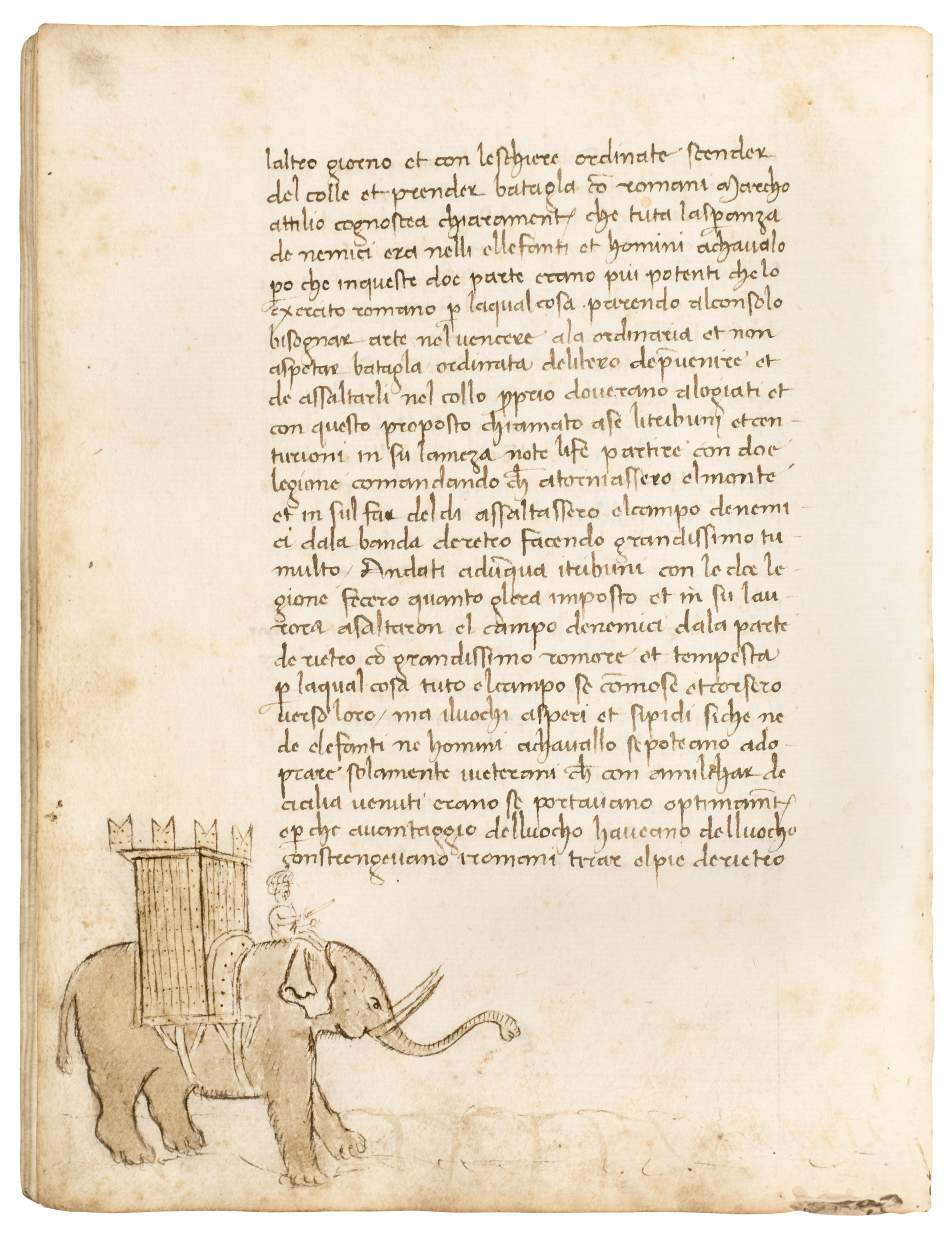

Leonardo Bruni, Della Prima Guerra Punica
manuscript written and decorated by Joannes de Justinopoli
Croatia, Zara (now Zadar), 22 February 1470
200 x 150 mm, 97 leaves, 14 drawings
fol. 31v, Elephant equipped for battle
Hide caption

Leonardo Bruni, Della Prima Guerra Punica
manuscript written and decorated by Joannes de Justinopoli
Croatia, Zara (now Zadar), 22 February 1470
200 x 150 mm, 97 leaves, 14 drawings
fol. VIIIv: Pen-and-wash drawing of a Roman gate with several inscriptions
Hide caption

Leonardo Bruni, Della Prima Guerra Punica
manuscript written and decorated by Joannes de Justinopoli
Croatia, Zara (now Zadar), 22 February 1470
200 x 150 mm, 97 leaves, 14 drawings
fol. 22v: a Roman battle ship with rowers


Leonardo Bruni, Della Prima Guerra Punica
manuscript written and decorated by Joannes de Justinopoli
Croatia, Zara (now Zadar), 22 February 1470
200 x 150 mm, 97 leaves, 14 drawings
Hide caption



